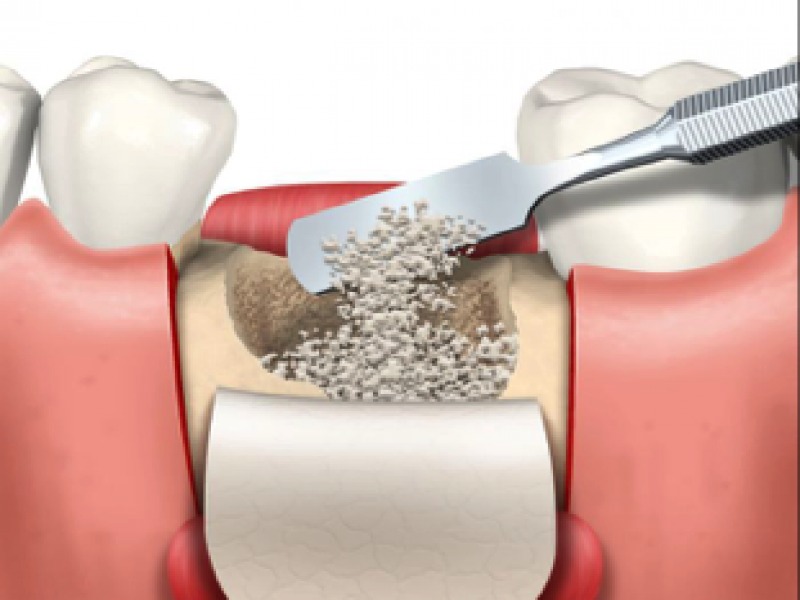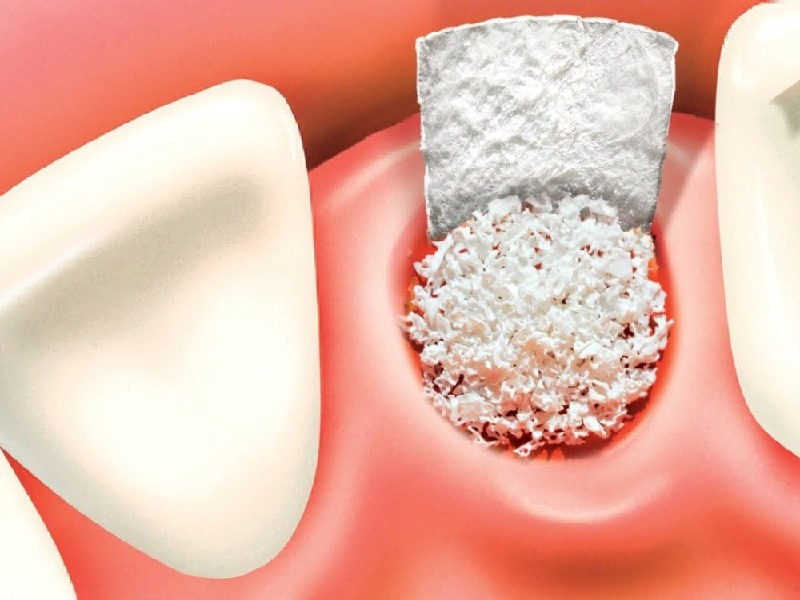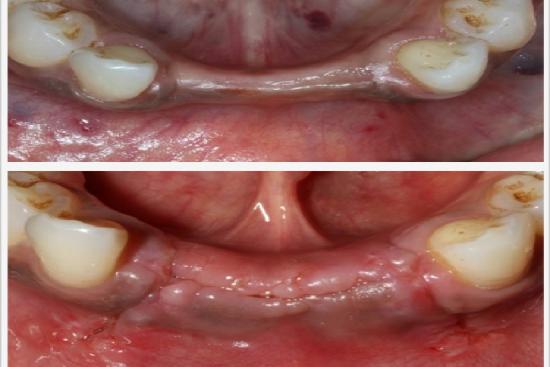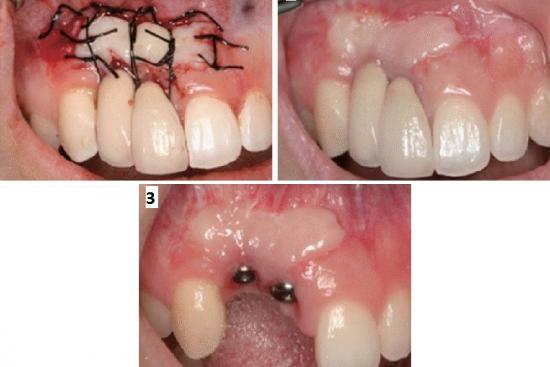Dental bone graft in Turkey is a common surgical procedure in orthodontics. This procedure is usually combined with a dental implant to rebuild the alveolar bone in the jaw. In this way, the grafting technique ensures aesthetic appearance while preventing the occurrence of premature aging signs.
- People with bone insufficiency to allow dental implantology
- People with congenital malformations or during jaw resection in cases of oral cancer
- Bleeding
- Infection
- Rejection of transplant
- Between 1 and 3 hours
- 6 months
- 95%
Dental bone grafting in Istanbul, Turkey: Costs & reviews
Our orthodontic surgeons at our partner clinics in Istanbul, Turkey, are always committed to restoring aesthetic as well as functional dental problems. To achieve optimal results, they work with a multidisciplinary team to provide patients with the best possible treatment and assistance.
The costs of bone grafting at our facilities are competitive with other dental clinics in Turkey. They include the hospital stay, the costs of the operation and anesthesia, as well as any additional services. Prices therefore vary between 2700 Dollars and 3700 Dollars, depending on the type of graft.
Best Clinics with Verified Reviews

- Renowned specialty dental clinic
- 12 examination rooms
- 26 specialized dentists on an area of 2,000 m2

- Specialised dental clinics in Istanbul
- 40 examination rooms
- 60 dentists in total area of 4.000 m2
Indications for Dental implantology
Dental implantology is a set of surgical techniques designed to restore one or more damaged or missing dental elements. These are inserted into the maxillary or mandibular bone and are made up of two components: the screw, which is inserted into the bone, and the abutment, which connects to the prosthesis.
With the right implant placement, patients can enjoy a new, more natural-looking aesthetic appearance. Oral functionality can also be restored which in turn, makes daily life easier.
Dental implantology requires a good quantity of bone to insert dental implants and ensure their stability. However, there is a risk of failure due to a lack of bone tissue, caused by certain traumas or pathologies affecting the gums. As a result, long-term loss of the dental implant can be expected, necessitating subsequent dental bone grafting.

Dental Bone Grafts in Turkey: In which cases?
The most common cases requiring dental bone grafting are:
- Teeth implant: People who are going to undergo a tooth implant surgery may be candidates for bone transplant surgery.
- Gum disease (periodontitis): A patient may suffer from infection damaging the gum. Thus, he can lose his teeth due to gingival infection. Therefore, this area must be filled with osseous tissue to maintain the dental implant.
- Bone loss: Poor osseous density makes a person older than he is. Bone deterioration in the jaw can cause the face to look shorter than it used to.

Types & sources of material used in this surgery
Several types of osseous tissue that from different sources, such as:
- Autologous graft (Intra-oral bone): This type of graft requires two operating positions: a sampling site and a transplant site.
- Biomaterial graft: This type of graft is a synthetic one that is created by artificial means, but looks like natural bone. They are ceramic or polymer-made and compatible with human bone.
- Allogeneic graft: This type of graft is a bone substitute from a special bank. The bones may come from a living or a dead donor.
- Xenograft: this type of graft involves using the bone of other species.
- Growth factors enhanced grafts: This kind of graft consists of stem cells that are seeded onto bioactive ceramics. The latter are conditions to generate osteoblasts (a type of bone cell).

The preoperative phase
Different steps should be done before and during a bone graft surgery in Istanbul, Turkey. Indeed, you should take the following steps.
First, the patient must schedule an initial consultation. During this step, the surgeon will perform a clinical examination to determine the treatment phase, the location of the extraction, and the amount of bone needed to reconstruct the deficient area. Then, our surgeons in Turkey may ask for a blood test and x-ray, depending on the patient's state and the therapeutic indication. Finally, the surgery is performed either in a dental office or in a clinic under local anesthesia.
The possible contraindications
The presence of an unhealthy gum, an altered overall condition of the patient, and an age under 18 may contraindicate the transplant as the risk of failure increases. It should be noted that the surgeon is the only person who can confirm whether the patient is well-prepared for a bone graft or not.
What are the postoperative consequences?
The postoperative consequences are simple, the complications are rare, and a period of convalescence may be necessary. The healing is generally fast, and your doctor may prescribe painkillers if needed. Generally, implant placement can be done 3–6 months after a bone transplant.
Tooth implant surgery will then improve your bone growth as your body considers the implants as if they were natural teeth. Indeed, tooth implants, such as All-on-8 and All-on-6, have a positive impact on bone formation and the prevention of bone loss.
What are the dental graft risks?
Bone grafts, like other surgical procedures, presents post-operative risks:
- Disruption of the healing process: Several factors can delay healing and contribute to the appearance of mucosal edema. This generally depends on the patient's state of oral and general health, as well as the possibility of taking medication that impedes proper dental recovery.
- Bleeding risks: The risk of bleeding depends on the quantity of bone removed, and is mainly linked to a coagulation problem.
- Infectious risks: These risks are highly likely if good practices and asepsis rules are not observed during the procedure. Bacteria may proliferate around the implant, necessitating the use of antibiotics.
Share this page
A tooth bone graft is used to manage the bone loss that occurs following a dental fracture. So it replaces the lack of buccal bone in order to correct the tooth structure defects.
There are many types of bone grafts, which can be classified as follows :
- Autogenous (or autologous): The bone is taken from the patient, from the chin, skull or shin area.
- Allogeneic: The bone comes from a specialized bank. Allogeneic bone grafts are obtained from human femoral heads.
- Xenogenous: Bone comes from another species, usually from the Bovidae family, whose bone is very well accepted by the human body.
- Alloplastic: Alloplastic grafts are derived from a synthetic biomaterial. This bone substitute is produced in the laboratory, and it is perfectly well-matched with human bone.
The mucosa takes 8 to 15 days to heal. The bones take more time to be strengthened. Therefore, the result is obtained after 4 to 6 postoperative months.
The success rate of bone transplant surgery with our clinics in Turkey is 95%.








